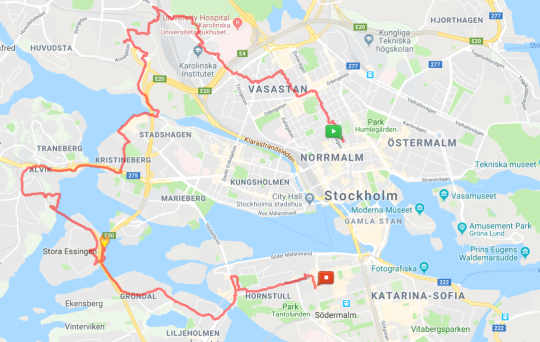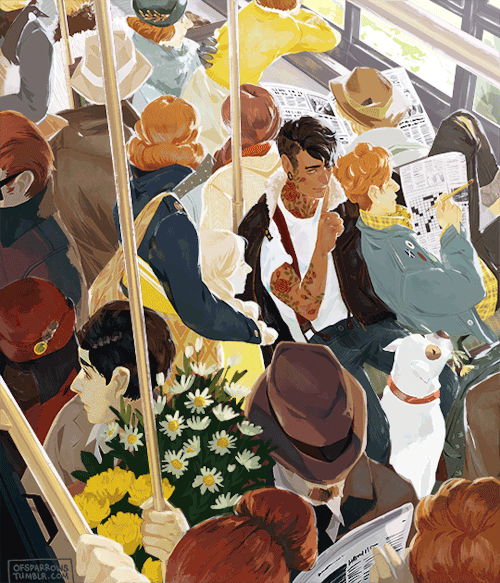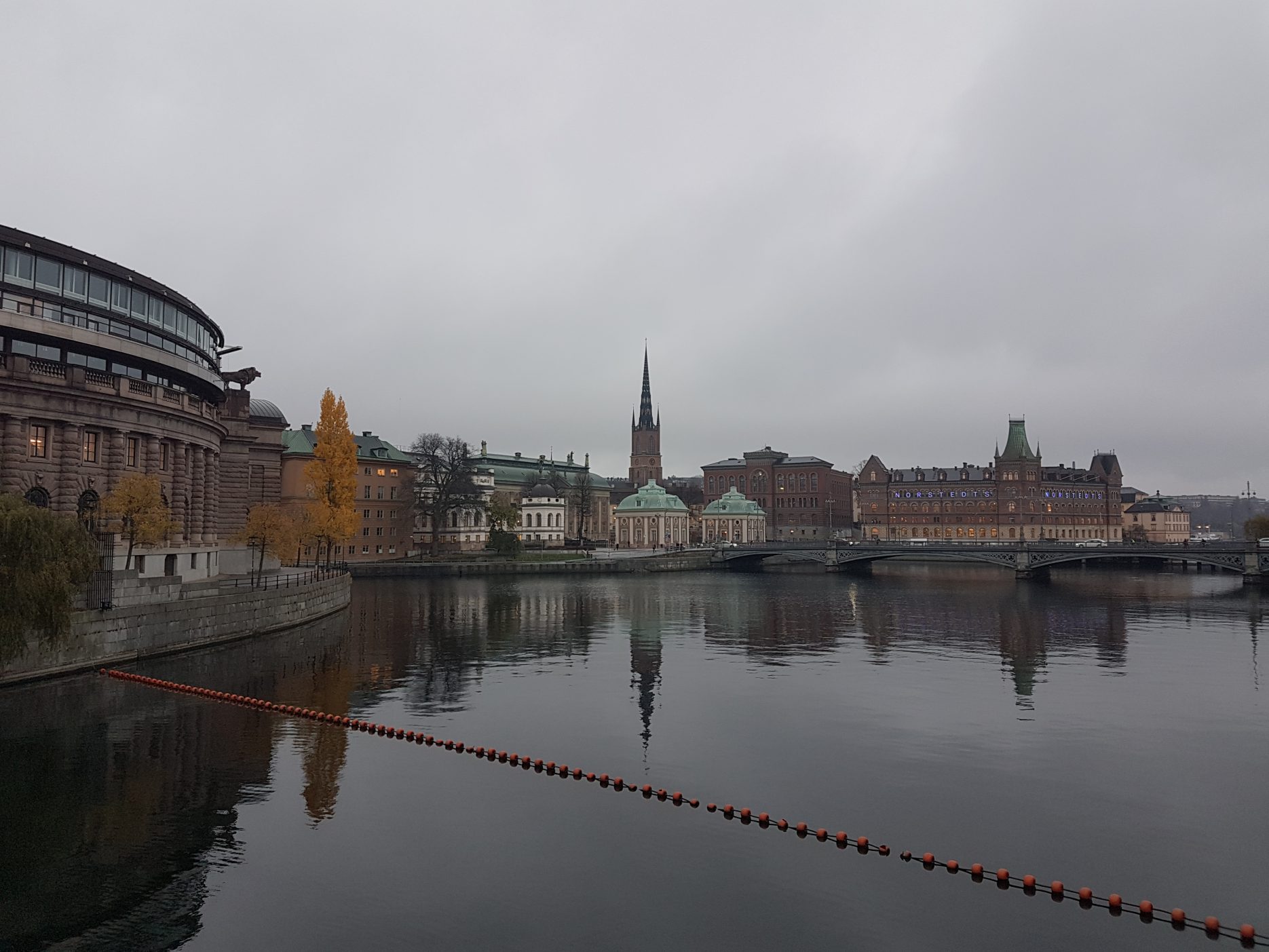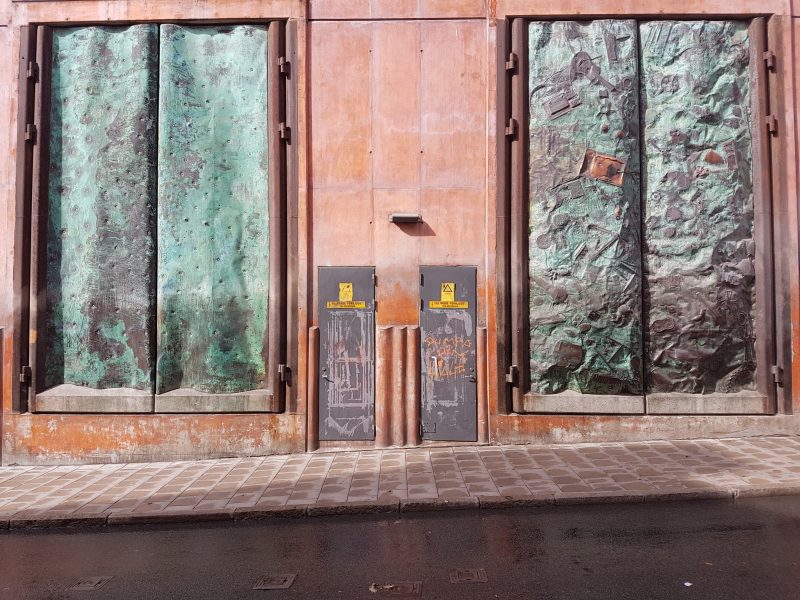Describing Stockholm’s appeal is quite tricky. I think it is another one of those places that are perfect to live in, but maybe not such good travel destinations. I’ve been saving the tourist attractions for when friends and family visit, so there might be a lot I haven’t come across yet.
While the siren song was certainly more melodic in Estonia, it cannot compare with the marinal beauty of the Stockholm archipelago. Stockholm’s most distinctive feature
is its islands, seas, canals, and lakes, with a selection of bathing jetties and boating docks. There is a stronger water culture here than anywhere else I’ve been, from Copenhagen and
Kobe to Bristol and Los Angeles.

The abundance of water gives the centre a fantastic, slow atmosphere. Stockholm compliments its natural aquatic beauty and infinite parklands with a stunning city. All the streets are wide boulevards bordered with tall 5 – 8 storey apartments, reminiscent of Oslo, but on a much larger scale. Though all these streets share many commonalities with other European cities like Prague and Brussels, what sets it apart is that Stockholm’s centre is unparalleled in its cleanliness. Is it possible that their innovative recycling methodology, more complex than the Japanese counterpart, is responsible for the tidiness? All the apartments in the centre are impeccably maintained, historic complexes with intricate roofs and beautiful exterior ornamentation. These highly-prized and competitive dwellings are almost sterile in their precious neatness. I’ve never seen a place like it and easily fell in love. There is not a single neighbourhood in the centre in which I don’t feel safe and comfortable and inspired.
These “similar” apartments may actually be a symptom of a famous Swedish philosophy. One expatriate I met at one of the three weekly CouchSurfing meetings described how “egalitarian” life was here. This sense of equality is an integral theme of life in Sweden. I encoutered it again in the Wikipedia entry:
All these unequal historic advances despite still having a contemporary monarchy. Nevertheless, egalitarianism might explain why not only the majority of the centre are replicated terraced apartments as far as the eye can see, but also why the drivers are so generous and patient with their ancient enemies, the pedestrians. People generally had nothing but good things to say about Stockholm and they all seemed proud to call Sweden home, in deep contrast to my backup Brexit option of Dublin. There was only one or two considerations that could jeopardise this “good thing”.
Population size and urbanity
Within a few hours of arriving, my affection for Stockholm was clear. I never questioned whether the city had enough “areas of interest” (as Google describes them). At nearly double the population of Dublin, Stockholm’s 952,058 city and 2,315,612 metro populations make it the most populous city I had ever considered moving to. It is so big that it makes more sense to investigate on the metro, though I started on foot.
On my first circuit spiraling out of the centre, it was pretty clear that a lot of the water boundaries that separated islands and differing mainlands bits were quite effective in marking where the centre ended. The yellow E20 motorway above Vasastan separates the centre from both the University Hospital and University of Stockholm, both of which are in more residential areas of town. While the bottom edge of the island of Södermalm demarcates the end of the centre to south. All in all, approximately 6 kilometres from top to bottom and a bit narrower from west to east. While the walk seemed longer at the time, you can do the journey in 77 minutes.

What’s important to note here is that apartments and efficient density are not reserved for central areas. Many newer and stylish areas with 100s of apartment buildings are called “residential” and not necessarily “suburban”. These areas will often have mixed-use buildings with markets, restaurants, and even business-to-business companies on the ground floor. Alvik in the west at the left of the map is where I first encountered a few houses, “villas” in Sweden. The only houses in the centre are usually 200 years old and probably don’t support taller, modern men and women.
I did around 3 circuits to the outskirts of the city, balancing these treks with kickboxing classes, gym trials, and various social events. Somehow that was satisfactory. Usually I would walk to the end of the greater metropolitan area and use those distances to calculate exactly how far a resident has to go to be in nature or in the countryside. However, it wasn’t necessary here. Describing exactly what makes a city too big is hard to explain. Maybe urban sprawl is the problem. However, having parts of the centre separated by seas and canals drastically reduces the atmospheric congestion normally experienced in a big city. Clearly, Stockholm’s size was just right. There was only one other thing…
Travelling crowds and liveability
In the Dublin review, I hinted that many of the locals appeared to dislike the centre. This might also be the case for Tallinn’s UNESCO old town as well, though that certainly did appeal to me more. Obviously, centres are filled with travellers, crowding the streets and perpetuating less desirable, touristy shops. Sadly, Stockholm has its own tourist-only area: Old town, the island of Gamla Stan. Although I walked through Gamla Stan everyday on my way from my accommodation on Södermalm to the events in Kungsholmen or apartment viewings in Östermalm, it took a long time to find the appeal (the pedestrian only alleys of Gåstorget are the key). I asked locals if I should consider getting an apartment on Gamla Stan, since it was conveniently located between the centre and Södermalm. Everyone said “No” and verified my hypothesis that they generally do not frequent Gamla Stan because of all the tourists.
What is the problem with travellers? As an expat, the larger percentage of tourists in a city, the less likely locals will interact with you. That’s my theory, anyway. In fact, I don’t really understand how people can live in small, famous villages and towns at all. Maybe it isn’t tourists that are the problem, but crowds in general. Could it be that all these population requirements are some neurotic agoraphobic coping mechanism to avoid crowds?

Compare for me the experience of wandering around a pre-modern palace and gardens with the very different sensation of walking in a famous, old town. Both will probably have the same number of people and most of them will likely be tourists. However, the experience is probably much different. A palace will usually have an abundance of space. The building and surroundings were designed to never feel full. In contrast, a city or historic town, like central Dublin, will grow organically. The roads will be created and maybe redesigned a few times over the centuries, but generally the land and building lines cannot really be changed. As more and more people populate the area, as the number of travellers increases every year, the space simply fills up and the speed of traffic slows considerally. It is unpleasant, but largely unavoidable.
In larger area, tourists are not a problem. I don’t dislike them. Firstly, I’m an empath: I know that we are both travelling for similar reasons. Even if I’m there “on Brexit”, looking for a place to live, I still want to see the sights too. They have just as much a right to it as I do. Nevertheless, when I finally move to my final destination, I want a place where I can integrate, socialise with local people, and not be fighting for space with tens of thousands of tourists everyday (like Bristol).
In Stockholm, I was faced with another city where a significant portion of the centre was effectively off-limits for social activities. Luckily, Gamla Stan was fairly easy to avoid.
And I didn’t avoid it. In the beginning, I really enjoyed walking into town. Now that I’ve literally been down every single street in Gamla Stan and solved the mystery of its appeal, I don’t really need to go again until family and friends are visiting. There is only one other very crowded touristic spot in Norrmalm that I also tend to avoid, but I don’t notice the tourists anywhere else. They blend into the larger multicultural population.
Gamla Stan has only 1 – 2 neighbourhoods out of the 7 – 12 in the larger centre. If there were only a few interesting neighbourhoods, like Dublin, the impact of the tourists could very well make the city unliveable.
I’m moving to Stockholm, Sweden, one of the happiest cities on Earth
People just seem happy in Stockholm. They seldom complain and are excited to be a part of one of the most progressive countries in the world. All the other requirements were met:
- Stockholm has a lot of English-based university degrees, though it doesn’t have any animation programs. Maybe you can start one?
- There are a significant amount of English-based events (to make friends) and users will often have multiple choices each day.
- Sweden is one of the top 3 best non-native, English speaking countries in the world. I didn’t encounter a single person that gave me a hard time about not speaking Swedish.
- Many government forms available in English.
- Residents do need to learn the local language (Swedish), but support is provided and there is no rush.
Since Stockholm was on my original list of 4 relocation cities, I decided that this was it; the search was over. I didn’t need to go to Malta to be sure. I found one of the best places I’ve come across, on par with Bristol. However, having the additional resources of a capital city and even more education options than Bristol, I would probably be happier here, despite the eventual burden of having to learn another language.
So I contacted the local authorities and asked them nicely if I could stay…



